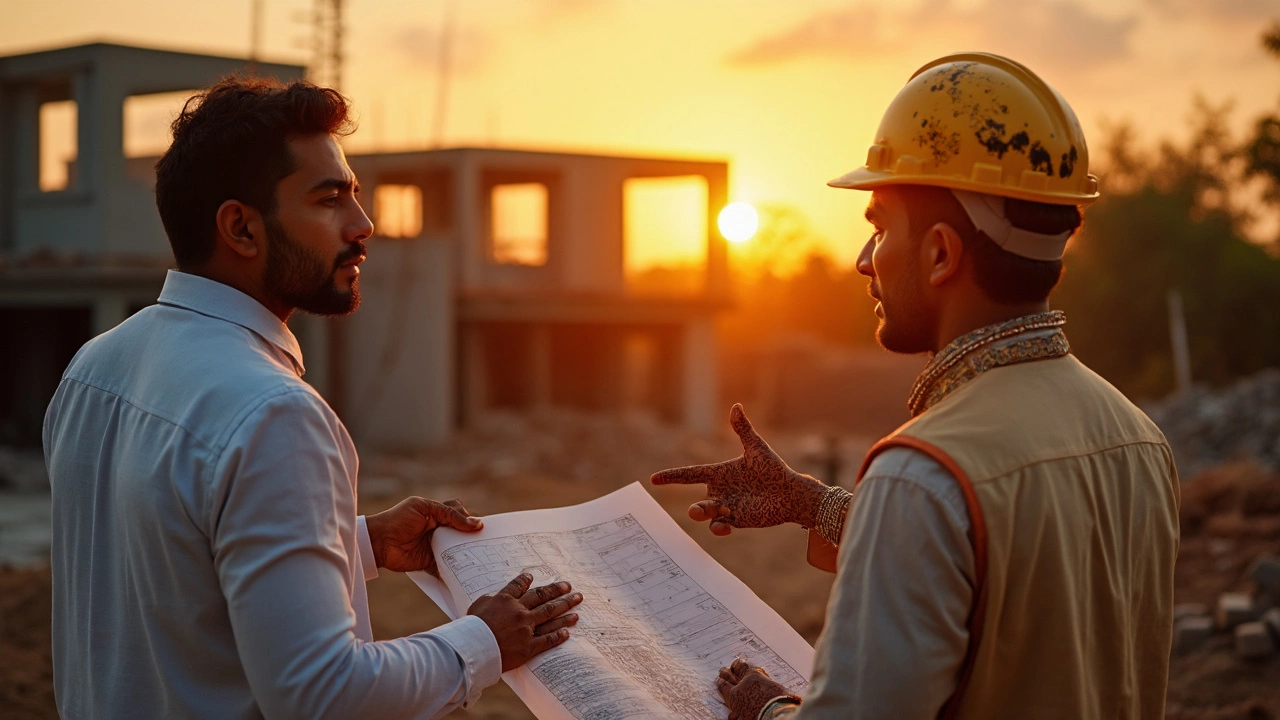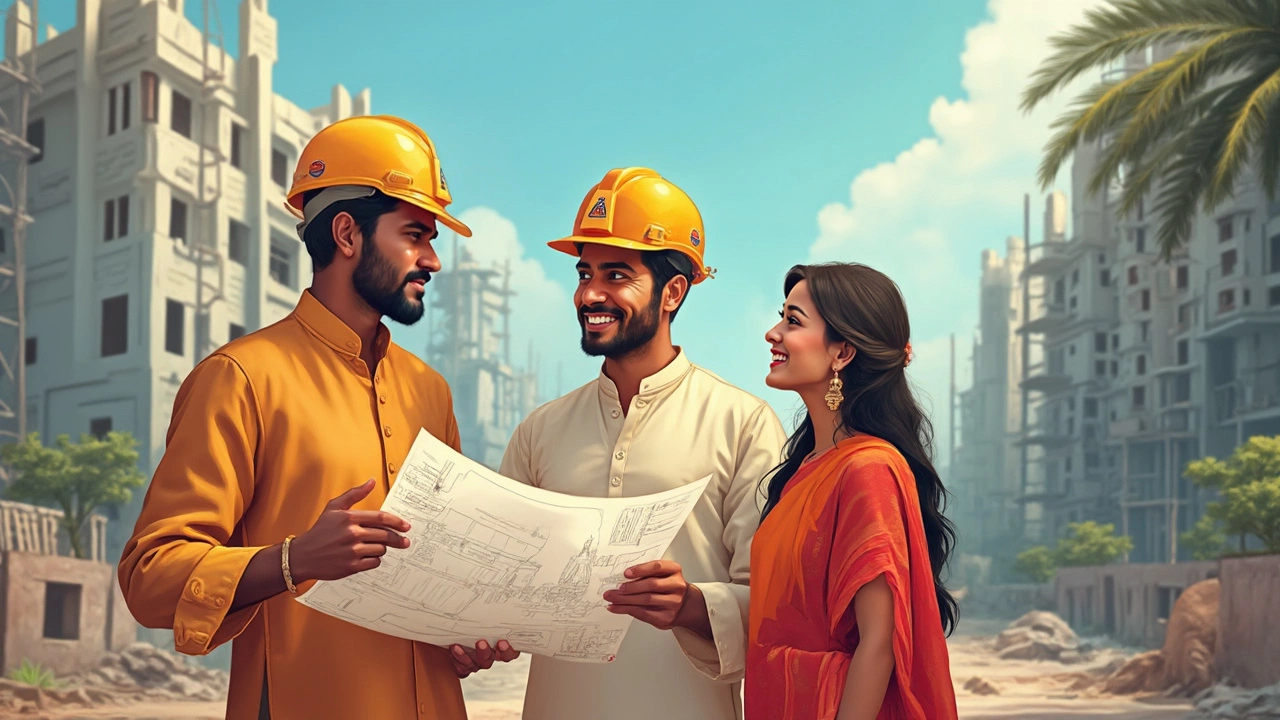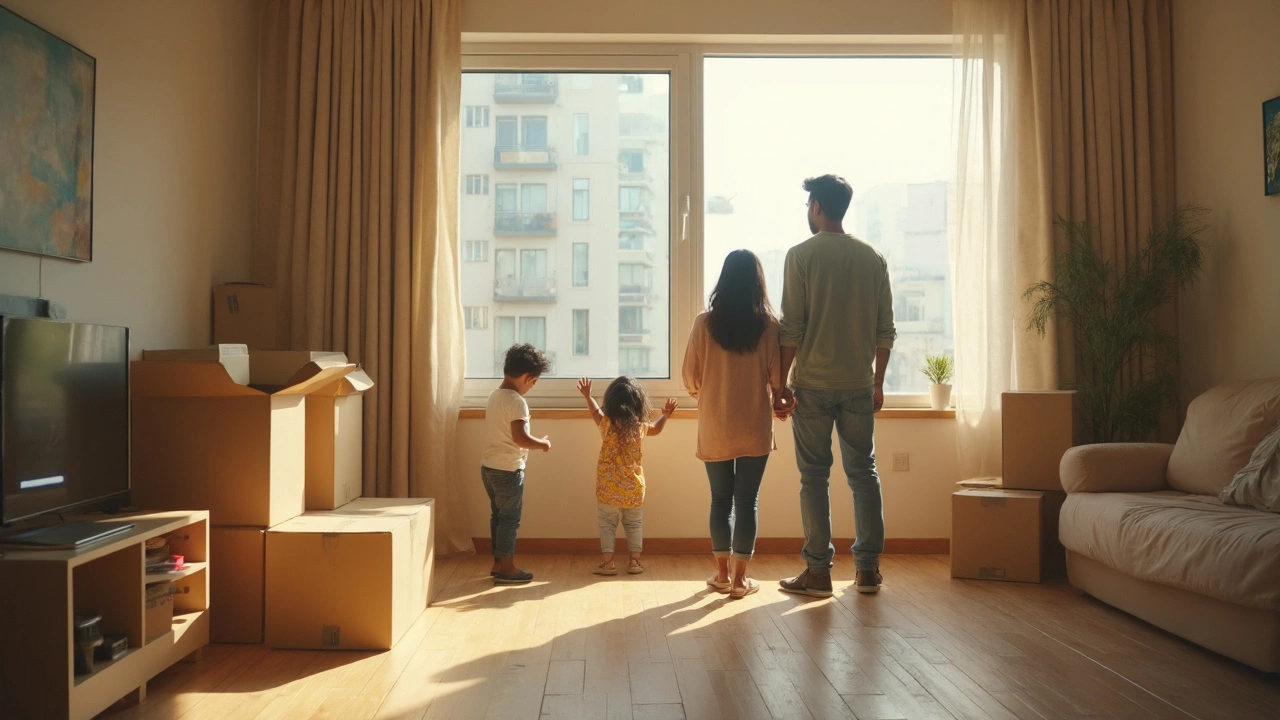Thinking about building a house? You've probably imagined picking out the perfect floor tiles or designing a kitchen that'll make your friends green with envy. But hang on, have you considered what could go wrong? It's not all interior design bliss. From financial surprises to stress that might keep you up at night, building a home has its downsides.
Let's start with a sneaky one: hidden costs. You set your budget, think you've accounted for everything, and then bam—unexpected expenses pop up like uninvited guests. Maybe the soil isn't quite right, or the building permits cost more than anticipated. These hidden costs can throw a wrench in your budget plans faster than you can say 'overdraft'.
And then there's time. Ever heard the phrase 'time is money'? Well, it applies big time here. Delays can hit from nowhere—bad weather, materials stuck on a ship halfway across the ocean, or a contractor juggling too many projects. Suddenly, your supposed move-in date feels like a distant dream.
- Hidden Costs and Budget Blowouts
- Time Delays and Scheduling Problems
- Quality and Contractor Challenges
- Design and Space Limitations
- Impact on Lifestyle and Stress Levels
Hidden Costs and Budget Blowouts
Let's dive into the not-so-glamorous side of house construction—the hidden costs that can make your wallet weep. You think you've planned for every penny, but then you hit a few surprises. What are these sneaky expenses that catch people off guard?
Permit and Zoning Fees
First off, there's the paperwork jungle: permits and zoning fees. Sometimes these can cost way more than expected, especially if you're building in an area with strict regulations. Make sure you check with your local council to get a clear idea of what's actually needed, so you can budget accordingly.
Site Prep Surprises
Got your heart set on a piece of land with a view? Just be prepared for what lies beneath—literally. The soil might need to be improved, or there could be rocks or trees that have to be removed. Site preparation can go from routine to costly nightmare, real quick.
Material Costs
Then we have material costs. Have you seen how much prices can fluctuate? A global event or supply chain hiccup can bump up costs overnight. It's wild. Keeping an eye on market trends might help you dodge major issues here.
Labor Costs
Oh, and don't forget labor costs. Good help isn't just hard to find, but expensive too. If your contractor underestimates the time needed, you might be left picking up extra costs for overtime or specialty skills.
Here's a quick look at how these costs can stack up:
| Cost Type | Potential Range |
|---|---|
| Permits & Zoning | $500 - $5,000 |
| Site Preparation | $2,000 - $15,000 |
| Material Fluctuations | 10% - 15% increase |
| Labor Overruns | $3,000 - $10,000 |
Unexpected costs are part of the game, but knowing what's likely to crop up can help you stay on top of your new builds experience. A little bit of foresight and thorough research can make all the difference.
Time Delays and Scheduling Problems
Building a house is notorious for taking longer than planned. While having a timeline is great in theory, reality often throws curveballs. And this happens more often than we'd like. Knowing what might slow you down can help keep frustrations at bay.
Weather is one of those unpredictable factors that can set back progress. A heavy storm can halt construction for days or even weeks, depending on the weather patterns in the area. If you’re building in a rainy or snowy climate, expect hiccups and plan for them by building buffer time into your schedule.
Ever heard about the delay due to material delivery issues? It's a classic. We've recently seen more transportation and supply chain problems affecting deliveries across various industries. If your roof tiles are sitting on a cargo ship that can't dock, your project will hit pause.
Don’t overlook the impact of contractor availability. Skilled workers have packed schedules, so if one subcontractor falls behind, it creates a domino effect. Communication with your building team is crucial to manage expectations.
How to Beat the Clock
So, how do you deal with all of this? Here are a few tips:
- Buffer your timeline: Add extra time to your schedule for potential setbacks. It’ll save you stress down the road.
- Stay on top of communication: Regular chats with your builder and contractors help spot issues early and keep things on track.
- Plan for seasons: Check seasonal weather patterns before breaking ground to avoid surprises.
- Order materials early: Given the current state of global supply chains, ordering ahead is more important than ever.
By anticipating potential holdups, staying flexible, and actively managing your project, you'll lessen the impact of time delays and keep your dream home journey a bit smoother. Understanding these dynamics is key—so don’t sweat it if things don't always go as planned.

Quality and Contractor Challenges
You might have the perfect vision for your dream home, but if the team constructing it isn't on the same page, things can go south pretty quickly. One of the biggest hurdles in new builds is ensuring quality construction and managing contractor expectations.
Quality Assurance
Even with detailed plans, the quality of materials and craftsmanship can vary. What looks great on paper doesn't always translate to reality. One misstep here can lead to costly fixes down the road. Want to avoid this? Consider hiring an independent inspector to monitor the build process. They can spot discrepancies before they become major problems. It's like having an extra pair of eyes ensuring your vision becomes a reality.
Choosing the Right Contractor
Picking the right contractor is like dating; you need to find someone you can trust. Start by asking friends or family for recommendations, and always check references. It's also worth visiting some past projects if you can. Seeing is believing, right? This due diligence can save you from sleepless nights wondering if your home will stand solid or sway in the breeze.
Communication is Key
Good communication with your contractor is non-negotiable. Regular updates can keep you in the loop, and weekly check-ins help nip potential issues in the bud. Make sure everything is documented too. Notes, emails, and even photos are invaluable if problems arise and resolutions need to be discussed.
So, while building a house is about creating a space just for you, it's also about avoiding headaches. By keeping an eye on quality and having the right team in place, you can put some worries to rest and focus on making your dream home a reality. Remember, it's a marathon, not a sprint.
Design and Space Limitations
Alright, enough about money and time—let's talk design. Admit it, the dream of crafting your new home's layout is like a blank canvas begging for personal touches. But here's where the hiccups start: space limitations can crush that dream if you're not careful.
When you're working with a set piece of land, sometimes those walls can't be pushed as far as you want. Local zoning laws might dictate just how much of your plot you can build on. And if you're trying to squeeze a sprawling mansion onto a postage stamp lot? Good luck with that.
Design isn't just about aesthetics either. You need functionality, and sometimes those clever Pinterest saves and vision boards don't translate to the real world. For instance, open-concept living is great, but have you thought about noise levels or heating costs?
Here's a tip: map out your daily routine and make sure the design fits. Will the sun wake you at 6 AM as it streams into your east-facing bedroom? Or is your dream office right next to the playroom where noise chaos reigns?
Want numbers? According to the National Association of Home Builders, in 2023, the average size of a newly built house was around 2,500 square feet. But that doesn't mean every square foot is usable. Think closets, hallways—you get the drift.
| Aspect | Average Dimension |
|---|---|
| Bedroom | 12x14 feet |
| Kitchen | 10x12 feet |
| Living Room | 15x20 feet |
In the end, stick to a mix of practicality and style. It's your space, your rules—but keeping future buyers in mind doesn't hurt either. By balancing creativity with cautious planning, you can dodge those design traps.

Impact on Lifestyle and Stress Levels
You might not realize it at first, but building a house can really shake up your daily routine. Sure, in the end, you're left with your dream home, but the process there can be a rollercoaster.
First off, the disruption to your lifestyle is worth mentioning. If you're living on-site in a temporary setup, it can feel like camping—except not the fun kind. Cooking in a makeshift kitchen or waking up to the sound of drilling is less than ideal. It's a constant reminder that you're in limbo, somewhere between homes.
Then there's the stress factor. Have you ever tried juggling work, family, and the new builds project on the side? It’s no walk in the park. The decisions are endless: fixtures, finishes, floor plans. Feeling overwhelmed yet? You're not alone. Most people find it can strangle the joy out of what should be an exciting time.
Talking numbers, it’s worth recognizing the emotional toll. In a survey conducted in 2023, about 60% of new homeowners reported elevated stress levels during construction. That’s significant and shows you’re not just imagining it.
Managing Stress and Maintaining Balance
So, how can you keep your sanity? A few tried and tested strategies might come in handy. First, set realistic expectations. Know that delays might happen and your budget could need tweaking.
Creating a support system is crucial, too. Lean on family or friends who can help with decision-making or just lend an ear when things get tough. Consider hiring a project manager to shoulder some of the workload, too—it’s a small investment that can save your peace of mind.
Lastly, keep sight of the bigger picture. Remind yourself why you embarked on this house construction journey. Visualizing the end result—a space truly yours—can help put the daily grind into perspective.



